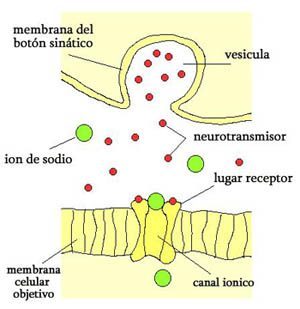 We call "fourth generation warfare" a type of conflict that includes several disputes that, separately, have been fought over the centuries or in recent years.
We call "fourth generation warfare" a type of conflict that includes several disputes that, separately, have been fought over the centuries or in recent years.
Armed conflicts have evolved to a great extent in recent decades, so that the distance between a professional soldier today and a non-militarized citizen is abysmal.
If in the Middle Ages, any person with tools from the field could face a soldier with certain guarantees of, at least, putting him in check, today this is unthinkable.
And the war is further complicated with the appearance of techniques, tactics, weapons and new battlefields (such as cyberspace), which still carry the fighting far beyond the knowledge of ordinary citizens, requiring ultra-professional soldiers. to fight conflicts.
It is in this context that wars have evolved into what has been called “fourth generation warfare”.
In this perspective on the way of waging war, uses such as conventional warfare (two armies facing each other), guerrilla warfare, asymmetric warfare, cyberwarfare, state terrorism or warfare are included in a single conflict. low intensity.
They also include propaganda (information, counterinformation, fake news), economic, political warfare, or states of civil street violence.
All these "modalities" or ways of waging war (sorry if at some point I use language that may seem frivolous or disrespectful) had so far been used more or less independently.
There is no temporal dividing line that marks the passage from a third generation of war to the fourth, it is a rather blurred process.
Historically, perhaps one of the earliest "purest" examples of fourth-generation warfare is the second phase of the Vietnam War, when the country had been divided in two and the United States replaced France as a foreign power to meddle in the war. country affairs, supporting South Vietnam.
 North Vietnam had a conventional army, which it used in the conflict, but it also used insurgent guerrilla and terrorist tactics (both carried out by the famous Vietcong) in the middle of enemy territory, as well as a propaganda war that it also carried out South Vietnam.
North Vietnam had a conventional army, which it used in the conflict, but it also used insurgent guerrilla and terrorist tactics (both carried out by the famous Vietcong) in the middle of enemy territory, as well as a propaganda war that it also carried out South Vietnam.
This type of conflict is called "fourth generation" because, with good logic, it is considered that three generations of types of war precede it.
The term was born in 1989, when US military analysts led by William S. Lind tried to explain the state's weight loss in the war.
The first generation would correspond to the type of war that was born after the Peace of Westphalia of 1648 that ended the 30-year war. It was marked by row and column tactics, and took advantage of the simple firearms of that time such as the musket. The Napoleonic Wars are a good example of these.
The second generation takes advantage of the advances brought by the industrial revolution, with online and moving fire tactics. World War I is the perfect example.
Finally, and before reaching this fourth generation, the third generation is based on penetrating the enemy lines at one or more points, and attacking them from behind. The Second World War and, above all, the blitzkrieg German are the paradigmatic example of this doctrine.
A characteristic of fourth-generation warfare is that the boundaries between combatants and non-combatants blur until they disappear.
Before the industrial revolution and the introduction of high mobility in armies, the casualty balance of a war was nurtured mainly by soldiers killed in battle, although civilian casualties have always been, as a result of acts of war such as sites of war. the cities and the subsequent carnage if the assaulting army managed to enter.
In the fourth generation of ways of waging war, every person can be a potential soldier, either because they carry firearms, such as a guerrilla, or they can be a propagandist or a cyber attacker.
An example of this type of war could be the one carried out against the terrorist group ISIS, since it has its part of conventional war (on the Iraqi and Syrian fronts), propaganda (online actions, as well as some cyberattacks committed by the so-called Cyberercalifato), and terrorist, with actions committed by civilians against civilians.
The so-called "hybrid war" would also be a type of conflict that would enter into the fourth generation, and that has the clearest exponent in the Russian operation to take over Crimea.
In fourth generation war cases in which at least one of the parties is not a state agent, it tends to present a decentralized and autonomous structure.
This is what is known by cells, as in the case of the terrorist attacks caused by the Islamic State, which are carried out by individuals alone, or by small cells with little or no connection between them, so that when one falls , does not affect the others.
Many times, the objective is not so much to defeat the enemy, as to convince him that his objectives will only be achieved at an exaggerated cost, which makes him question his performance.
The way of making war has evolved a lot since some primitive man threw a stone at another; swords, shields, spears, gunpowder, catapults, carabiners, rifles, machine guns, cannons, tanks, grenades, missiles, nuclear bombs, airplanes, computers, manipulated information ... And we have yet to see more changes, but a fifth generation still has us It is far.
Photos: Fotolia - Intueri / Martin Fally









